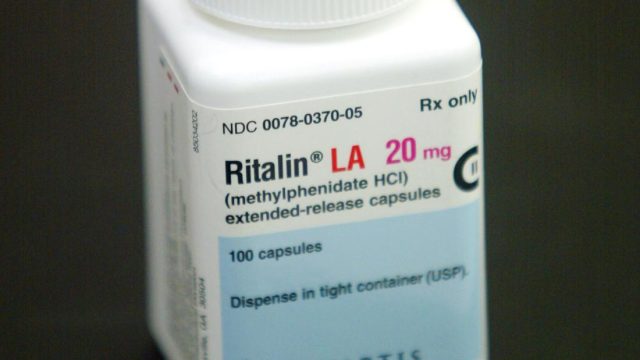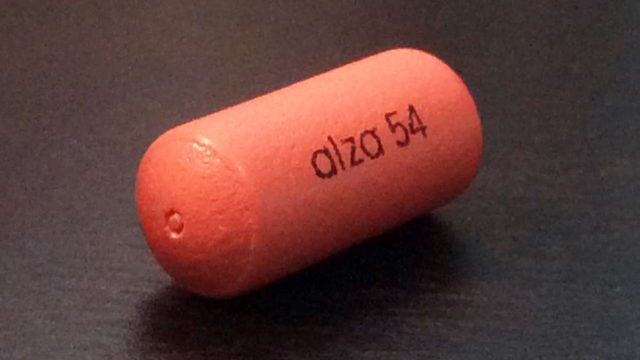standard-title
ADD / ADHD
Latest News Regarding ADD / ADHD and Your Health
Loading…
You have chosen to share the following article: How elderberries can help you fight the flu To proceed, simply complete the form below, and a link to the article will be sent by email on your behalf.Note: Please don’t include any URLs in your comments, as they will be removed upon submission. We do not store details you enter into this form. Please see our privacy policy for more information. Message sent successfully The details of this article have been emailed on your behalf. Click here to return to the Medical News Today home page.
Attention deficit hyperactivity disorder is a type of neurodevelopmental disorder. Although people typically associate this condition with children, it often persists into adulthood. Symptoms include disorganization, restlessness, and an inability to focus. According to the Anxiety and Depression Association of America, 60 percent of children with attention deficit hyperactivity disorder (ADHD) in the United States will continue to have the disorder as adults. As a result, about 4 percent of the adult population in the U.S. has ADHD. ADHD can present in three different ways: predominantly inattentive ADHD predominantly hyperactive-impulsive ADHD a combination of inattentive and hyperactive-impulsive ADHD A person who has inattentive ADHD might have trouble paying attention or may struggle to stay organized. A person with hyperactive-impulsive ADHD may feel as though they are always restless or find that they make impulsive decisions. How symptoms differ in children and adults An inability to focus and restlessness may be symptoms of ADHD. Each of these three types of ADHD can affect both children and adults. However, the symptoms of each type can often be different in adulthood than in childhood. The symptoms can also change with age, which means that a person may move from having one type of […]
You have chosen to share the following article: How elderberries can help you fight the flu To proceed, simply complete the form below, and a link to the article will be sent by email on your behalf.Note: Please don’t include any URLs in your comments, as they will be removed upon submission. We do not store details you enter into this form. Please see our privacy policy for more information. Message sent successfully The details of this article have been emailed on your behalf. Click here to return to the Medical News Today home page.
You have chosen to share the following article: How elderberries can help you fight the flu To proceed, simply complete the form below, and a link to the article will be sent by email on your behalf.Note: Please don’t include any URLs in your comments, as they will be removed upon submission. We do not store details you enter into this form. Please see our privacy policy for more information. Message sent successfully The details of this article have been emailed on your behalf. Click here to return to the Medical News Today home page.
Executive function is a broad group of mental skills that enable people to complete tasks and interact with others. An executive function disorder can impair a person’s ability to organize themselves and control their behavior. However, executive function disorder is not a specific, standalone diagnosis or condition. Instead, neurological, mental health, and behavioral disorders, such as depression and attention deficit hyperactivity disorder (ADHD), can affect a person’s executive function. What is executive function disorder? Executive function disorder can affect a person’s ability to concentrate and manage time. Executive function skills help people complete tasks and interact with others. They include a range of skills, such as: planning and organization concentrating and controlling mental focus analyzing and processing information controlling emotions and behavior remembering details managing time multitasking problem-solving An executive function disorder impairs some of these skills, which can affect a person’s ability to manage and organize themselves to achieve goals. However, the Diagnostic and Statistical Manual of Mental Disorders (DSM-5) does not recognize executive function disorder as a specific mental health condition. Instead, executive function issues are symptomatic of other neurological, mental health, and behavioral disorders. For example, depression may affect certain executive functions, such as memory, attention, and […]
You have chosen to share the following article: How elderberries can help you fight the flu To proceed, simply complete the form below, and a link to the article will be sent by email on your behalf.Note: Please don’t include any URLs in your comments, as they will be removed upon submission. We do not store details you enter into this form. Please see our privacy policy for more information. Message sent successfully The details of this article have been emailed on your behalf. Click here to return to the Medical News Today home page.
You have chosen to share the following article: How elderberries can help you fight the flu To proceed, simply complete the form below, and a link to the article will be sent by email on your behalf.Note: Please don’t include any URLs in your comments, as they will be removed upon submission. We do not store details you enter into this form. Please see our privacy policy for more information. Message sent successfully The details of this article have been emailed on your behalf. Click here to return to the Medical News Today home page.
You have chosen to share the following article: How elderberries can help you fight the flu To proceed, simply complete the form below, and a link to the article will be sent by email on your behalf.Note: Please don’t include any URLs in your comments, as they will be removed upon submission. We do not store details you enter into this form. Please see our privacy policy for more information. Message sent successfully The details of this article have been emailed on your behalf. Click here to return to the Medical News Today home page.
You have chosen to share the following article: How elderberries can help you fight the flu To proceed, simply complete the form below, and a link to the article will be sent by email on your behalf.Note: Please don’t include any URLs in your comments, as they will be removed upon submission. We do not store details you enter into this form. Please see our privacy policy for more information. Message sent successfully The details of this article have been emailed on your behalf. Click here to return to the Medical News Today home page.
Attention deficit hyperactivity disorder is a condition that affects behavior. It causes people to be hyperactive and impulsive. They may also be easily distracted and have difficulty concentrating or sitting still. Known as ADHD, the condition is a mental health disorder that affects both adults and children and is recognized by the American Psychiatric Association (APA). Signs of ADHD are different in adults and children. This article explains what to look for and how to source help and treatment. What are the signs of ADHD in children? ADHD has a variety of potential symptoms, which may be mistaken for common childhood behaviour. ADHD is thought to affect 1 in 10 children between 5 to 17 years old. Children are usually tested and diagnosed because they have problems at school. Signs in children include: Inattention, such as: not paying attention in class making careless mistakes in schoolwork appearing not to listen being unable to follow instructions being unable to finish schoolwork having difficulty getting organizing avoiding tasks that require focus, such as homework losing or forgetting items becoming easily distracted Hyperactivity and impulsivity, such as: fidgeting being unable to remain in their seat being constantly in motion running or climbing on […]
When Vyvanse starts to wear off, or when a person stops taking the medication suddenly, they may experience a Vyvanse crash. This ADHD medication can cause severe withdrawal symptoms such as fatigue or depression. In this article we look at methods a person can use to help cope with the symptoms of a Vyvanse crash.
Guanfacine, under the brand name Intuniv, and Adderall are prescription drugs that treat attention deficit hyperactivity disorder. Both drugs help treat the disorder, which people commonly refer to as ADHD, but they work in different ways. In the case of Adderall, it is a stimulant. Conversely, guanfacine is a nonstimulant. In this respect, they are taken in different ways and may have different side effects. The best option for each person depends on their specific symptoms, needs, and personal preferences. People usually use guanfacine only if stimulant medications are not appropriate. This article discusses the differences, side effects, and dosages for guanfacine and Adderall. What are they? Guanfacine and Adderall are medications that treat ADHD symptoms. Guanfacine and Adderall are two medications that treat ADHD and several other conditions. Adderall is the brand name for a combination of amphetamine and dextroamphetamine salts. Intuniv is the brand name for guanfacine. Both drugs are also available in generic forms. Adderall is a central nervous system stimulant. Doctors usually use stimulants to treat ADHD in children and adults. Stimulants work by making it easier for nerve receptors in the brain to communicate, which can help control impulsivity as well as regulate attention and […]
You have chosen to share the following article: How elderberries can help you fight the flu To proceed, simply complete the form below, and a link to the article will be sent by email on your behalf.Note: Please don’t include any URLs in your comments, as they will be removed upon submission. We do not store details you enter into this form. Please see our privacy policy for more information. Message sent successfully The details of this article have been emailed on your behalf. Click here to return to the Medical News Today home page.
ADHD sufferers don’t need to cause yourself heart-gripping pressure when going on vacation. Instead, create a checklist and make sure to check each item off before departure. Vacations are unwinding parts from the real world, isn’t that so? Not on the off chance that you have ADHD. At that point, vacation time is run-like mindless monkey time. It’s worry time. It’s overlooked stuff time. What’s more, it happens before you depart. When you reach your last stop, you’ll be tormented by blame and regret as you raced to the store to spend more cash to purchase more things you shouldn’t have overlooked. Or, learn about a fancy restaurant when the entire family takes off for an extravagant meal and you didn’t pack anything fancier than a shirt. Or, feel embarrassed when you remembered everything except for your telephone charger, and you’re on an island, and they don’t offer your telephone charger anyplace. You may require some assistance immediately and we have some tips to make your experience enjoyable. 1. Plan two weeks to a month ahead of time Jot down the activities in your organizer, alongside the significant telephone numbers, and afterward do it. These activities incorporate securing pet sitters, […]
You have chosen to share the following article: How elderberries can help you fight the flu To proceed, simply complete the form below, and a link to the article will be sent by email on your behalf.Note: Please don’t include any URLs in your comments, as they will be removed upon submission. We do not store details you enter into this form. Please see our privacy policy for more information. Message sent successfully The details of this article have been emailed on your behalf. Click here to return to the Medical News Today home page.
Omega-3 fish oil supplements can improve attention in some youths with attention deficit hyperactivity disorder (ADHD), according to a new study. Share on PinterestA new study finds that for some youths with ADHD, omega-3 supplements are just as good as medication. ADHD is a condition in which a person presents a marked pattern of inattention or hyperactivity and impulsivity — or all of these symptoms — to a level that interferes with development and functioning. According to the Centers for Disease Control and Prevention (CDC), there are more than 6 million children with ADHD in the United States. In the new study, scientists at King’s College London in the United Kingdom and China Medical University in Taichung, Taiwan, investigated the effect of omega-3 fish oil supplements on cognitive function in youths with ADHD. A recent Translational Psychiatry paper describes the new findings. The investigation took the form of a randomized controlled trial and involved 92 youths with ADHD whose ages ranged from 6 to 18 years. For 12 weeks, the youths received either high doses of the omega-3 fatty acid eicosapentaenoic acid (EPA) or a placebo. The results showed that of the participants who received the supplement, those who had […]
You have chosen to share the following article: How elderberries can help you fight the flu To proceed, simply complete the form below, and a link to the article will be sent by email on your behalf.Note: Please don’t include any URLs in your comments, as they will be removed upon submission. We do not store details you enter into this form. Please see our privacy policy for more information. Message sent successfully The details of this article have been emailed on your behalf. Click here to return to the Medical News Today home page.
You have chosen to share the following article: How elderberries can help you fight the flu To proceed, simply complete the form below, and a link to the article will be sent by email on your behalf.Note: Please don’t include any URLs in your comments, as they will be removed upon submission. We do not store details you enter into this form. Please see our privacy policy for more information. Message sent successfully The details of this article have been emailed on your behalf. Click here to return to the Medical News Today home page.
You have chosen to share the following article: How elderberries can help you fight the flu To proceed, simply complete the form below, and a link to the article will be sent by email on your behalf.Note: Please don’t include any URLs in your comments, as they will be removed upon submission. We do not store details you enter into this form. Please see our privacy policy for more information. Message sent successfully The details of this article have been emailed on your behalf. Click here to return to the Medical News Today home page.
Attention deficit hyperactivity disorder (ADHD) causes a range of symptoms, including hyperactivity, difficulty paying attention, and behavioral problems. ADHD may also affect romantic relationships, feelings of self-worth, or even the ability to perform sexually. These markers are not used to make a diagnosis, and they may be due to the disorder itself or develop as a side effect of medicines used for treatment. Though ADHD is frequently diagnosed in childhood, it affects the lives of many adults. Some adults with ADHD report experiencing changes in their sex life. How does ADHD impact sexuality? Nailing down symptoms is difficult because these changes can affect everyone differently: Hyposexuality A person with ADHD may have a low sex drive. Some people with ADHD report changes in their sex drive. Some experience hyposexuality or the loss of the desire for sex. A person experiencing hyposexuality may have no interest in sexual activity whatsoever. They may find sex challenging to focus on, lose interest in the middle of sexual activity, or become easily distracted. Hyposexuality might be symptomatic of ADHD in some cases, but it is also a possible side effect of some ADHD medications or antidepressants that are often used to treat ADHD symptoms. […]
Ritalin and Adderall can help treat attention deficit hyperactivity disorder, or ADHD. Doctors also sometimes prescribe these medications to people with narcolepsy. Ritalin and Adderall are the brand names for two different types of stimulant medication. According to the National Institute of Mental Health (NIMH), stimulants work by increasing the chemicals in a person’s brain that regulate thinking and paying attention. Research shows that stimulants are generally safe and effective for the treatment of ADHD. In this article, learn about the differences between the two common stimulants Ritalin and Adderall. We also cover the side effects and safety of each drug. Ritalin vs. Adderall The long-term side effects of Ritalin and Adderall are unknown. Although Ritalin and Adderall are both stimulants, they contain different active ingredients. The drug in Ritalin is methylphenidate hydrochloride, while Adderall is a combination of amphetamine and dextroamphetamine. Both medications are effective in reducing the symptoms of ADHD. According to the Centers for Disease Control and Prevention (CDC), “Between 70–80 percent of children with ADHD have fewer ADHD symptoms when they take these fast-acting medications.” However, Ritalin and Adderall can also have significant side effects, and the long-term effects of taking the drugs remain unknown. According […]
You have chosen to share the following article: How elderberries can help you fight the flu To proceed, simply complete the form below, and a link to the article will be sent by email on your behalf.Note: Please don’t include any URLs in your comments, as they will be removed upon submission. We do not store details you enter into this form. Please see our privacy policy for more information. Message sent successfully The details of this article have been emailed on your behalf. Click here to return to the Medical News Today home page.
Concerta and Adderall are stimulant medications that a doctor may prescribe for a person with attention deficit hyperactivity disorder, or ADHD. They can also help a person with narcolepsy. Stimulants work by helping regulate the chemicals in a person’s brain that support thinking and paying attention. Although they have many associated side effects, stimulants are generally safe and effective at treating the symptoms of ADHD. In this article, learn about the differences between Concerta and Adderall, including the effects and dosage. Concerta vs. Adderall Adderall may benefit adults with ADHD more than Concerta. Although they are both stimulants and work in a similar way, Concerta and Adderall are two different types of drug. They are both effective at treating the symptoms of ADHD, but Concerta is a longer-acting drug than Adderall. Concerta is a brand name for the drug methylphenidate in an extended-release formulation. This is the same drug in Ritalin, but Concerta releases the drug evenly over a prolonged period. The slow release is what sets it apart from other ADHD medications. Adderall contains two drugs: amphetamine and dextroamphetamine. Manufacturers designed Concerta so that its effects last 12 hours, whereas those of Adderall peak at around 3 hours. According […]
While there is no definitive ADHD diet, many sources claim that certain diets, foods, and meal plans can help reduce symptoms. Various foods can affect energy and concentration levels. Certain choices may, therefore, be better for people with attention deficit hyperactivity disorder (ADHD). Some research suggests that following specific diets — such as elimination diets, the Few Foods diet, and the Mediterranean diet — could play a role in managing ADHD. In this article, we first take a look at specific foods that could improve or worsen ADHD symptoms. Then, we explore what the research says about specific ADHD diets. Best foods for ADHD Certain foods are better at keeping a person’s energy and blood sugar levels stable and improving concentration. These foods may especially benefit people with ADHD. The following may be particularly helpful: Protein-rich foods Eggs and whole-grain bread may benefit people with ADHD. Protein is essential for the health of the brain, and it plays a key role in producing brain chemicals called neurotransmitters. Including protein in a meal also prevents spikes in blood glucose levels. Some people suggest that these surges increase hyperactivity. Foods rich in protein include: meat and poultry products fish and shellfish beans […]
Adderall is a drug that children, adolescents, and adults with ADHD can take to help relieve their symptoms. Some people may experience mild to severe side effects while taking Adderall. Attention deficit hyperactivity disorder (ADHD) can cause a lack of attention, hyperactivity, and impulsiveness. Most people with ADHD receive their diagnosis before the age of 16, and about 60% of people find that their symptoms continue to affect them in adulthood. Adderall is a stimulant drug. Its generic name is amphetamine. Stimulant drugs tend to be the first treatment choice for the symptoms of ADHD. The side effects of Adderall are similar to those of other stimulant drugs that people take to relieve ADHD symptoms. In this article, we discuss the possible short- and long-term side effects of taking Adderall. Common side effects Adderall can cause headaches and difficulty sleeping. The most common side effects of Adderall are: Less common side effects There are a number of other side effects of Adderall. However, scientists have not yet determined how common they are. Such side effects may include: Severe side effects A heart attack is a rare possible side effect of most ADHD medication. It is also possible to experience more […]
You have chosen to share the following article: How elderberries can help you fight the flu To proceed, simply complete the form below, and a link to the article will be sent by email on your behalf.Note: Please don’t include any URLs in your comments, as they will be removed upon submission. We do not store details you enter into this form. Please see our privacy policy for more information. Message sent successfully The details of this article have been emailed on your behalf. Click here to return to the Medical News Today home page.
You have chosen to share the following article: How elderberries can help you fight the flu To proceed, simply complete the form below, and a link to the article will be sent by email on your behalf.Note: Please don’t include any URLs in your comments, as they will be removed upon submission. We do not store details you enter into this form. Please see our privacy policy for more information. Message sent successfully The details of this article have been emailed on your behalf. Click here to return to the Medical News Today home page.
Doctors often prescribe Ritalin for the treatment of ADHD and sometimes for narcolepsy. Ritalin can cause various side effects and also has the potential for misuse and addiction. Ritalin is the brand name for methylphenidate, a medication that stimulates the production of dopamine and norepinephrine in the brain. Experts believe that these two chemicals play an important role in attention deficit hyperactivity disorder (ADHD). Some people misuse Ritalin because of the stimulant effect it has on the brain. In this article, we look at the side effects of Ritalin along with its uses, dosage, and precautions. We also discuss Ritalin addiction, whether long-term use is harmful, and when to see a doctor. Side effects As with all medications, Ritalin can cause side effects in some people. The following table lists the possible side effects of Ritalin: Very common Common Rare nervousness anxiety convulsions sleeplessness agitation tics stomach upset restlessness and feeling jittery stroke dry mouth headache visual disturbances upper respiratory infections drowsiness blurred vision decreased appetite dizziness abnormal liver function uncontrolled, involuntary movements drug-induced skin diseases cough muscle cramps abdominal pain severe allergic reactions vomiting blood disorders heartburn toothache rapid heartbeat increased blood pressure rash fever hair loss excessive sweating […]
You have chosen to share the following article: How elderberries can help you fight the flu To proceed, simply complete the form below, and a link to the article will be sent by email on your behalf.Note: Please don’t include any URLs in your comments, as they will be removed upon submission. We do not store details you enter into this form. Please see our privacy policy for more information. Message sent successfully The details of this article have been emailed on your behalf. Click here to return to the Medical News Today home page.
Adderall is a combination of the stimulant drugs amphetamine and dextroamphetamine. Doctors prescribe it for the treatment of attention deficit hyperactivity disorder (ADHD) and narcolepsy, and they sometimes use it off-label for other conditions. Although taking Adderall can cause hair loss in some people, this is a relatively uncommon side effect. Some people misuse Adderall for its stimulant effects and to enhance their study and examination performance. However, taking Adderall at high dosages and for prolonged periods can lead to dependence and serious side effects, including psychosis, cardiovascular events, and even sudden death. Doctors usually recommend regular follow-ups for people who are taking Adderall for extended periods to ensure that the benefits continue to outweigh the risks. In this article, we explore whether Adderall can cause hair loss. We also discuss the treatment options for Adderall-related hair loss, other potential side effects, and alternative treatments. Can Adderall cause hair loss? A person who experiences hair loss while taking Adderall should speak to a healthcare provider. The manufacturers’ medication guide lists alopecia, or hair loss, as a potential side effect of taking Adderall. However, the manufacturers do not provide any data on how common this side effect is, and no recent […]
You have chosen to share the following article: How elderberries can help you fight the flu To proceed, simply complete the form below, and a link to the article will be sent by email on your behalf.Note: Please don’t include any URLs in your comments, as they will be removed upon submission. We do not store details you enter into this form. Please see our privacy policy for more information. Message sent successfully The details of this article have been emailed on your behalf. Click here to return to the Medical News Today home page.
You have chosen to share the following article: How elderberries can help you fight the flu To proceed, simply complete the form below, and a link to the article will be sent by email on your behalf.Note: Please don’t include any URLs in your comments, as they will be removed upon submission. We do not store details you enter into this form. Please see our privacy policy for more information. Message sent successfully The details of this article have been emailed on your behalf. Click here to return to the Medical News Today home page.
You have chosen to share the following article: How elderberries can help you fight the flu To proceed, simply complete the form below, and a link to the article will be sent by email on your behalf.Note: Please don’t include any URLs in your comments, as they will be removed upon submission. We do not store details you enter into this form. Please see our privacy policy for more information. Message sent successfully The details of this article have been emailed on your behalf. Click here to return to the Medical News Today home page.
close
The information contained within this website is not intended to be a substitute for professional medical advice, diagnosis or treatment. Members contribute personal experiences by sharing what did or didn’t work to address their concern and help educate others which may expedite recovery. As such, always seek the advice of your physician or other qualified health provider with any questions about your medical condition. Do not disregard professional medical advice or delay seeking advice or treatment because of something you have read here.


































Recent Comments